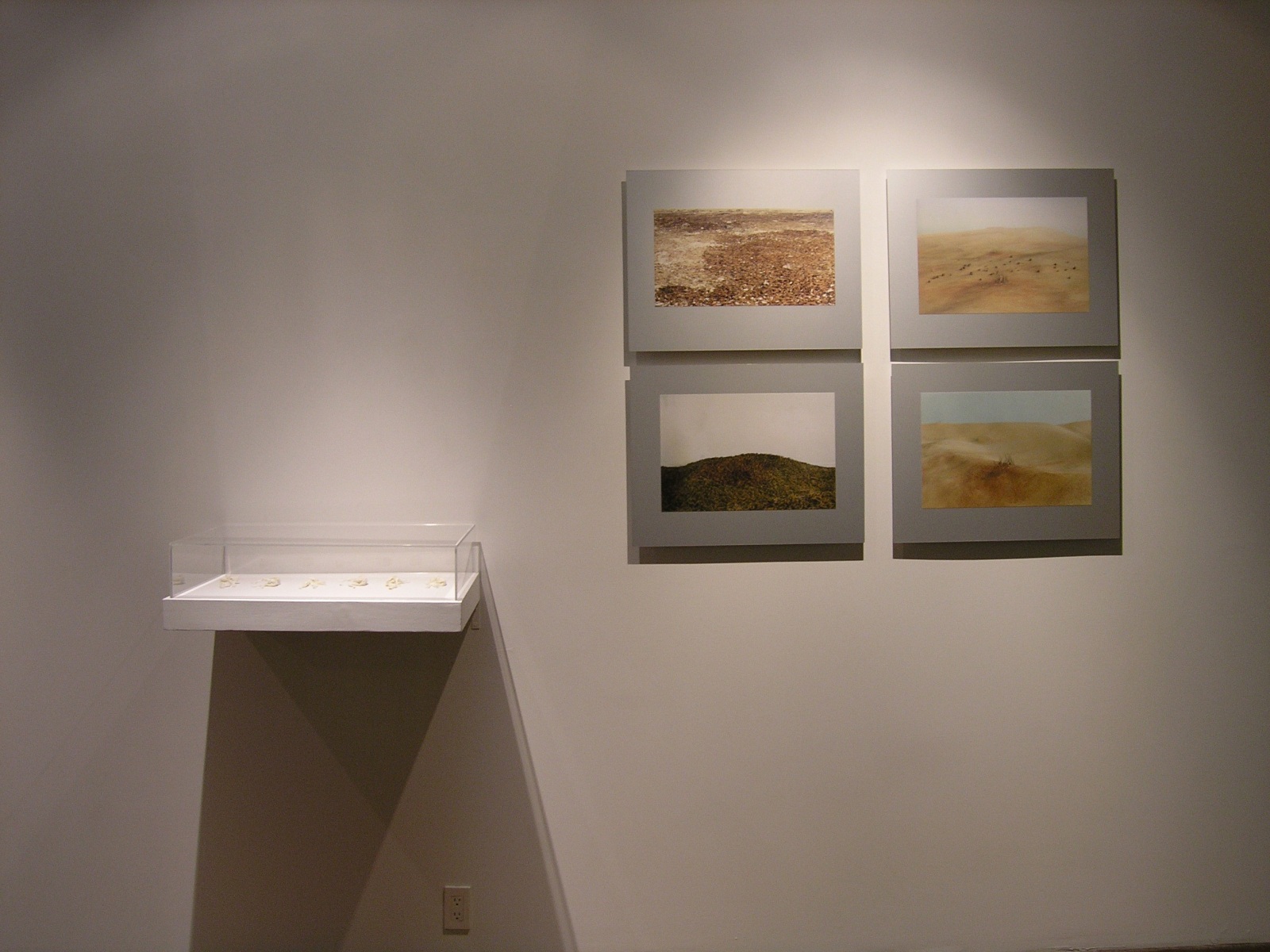
Exhibition View
For an experience of contemporary South Asian art different in look and tone from that in "Edge of Desire: Recent Art in India" at the Asia Society and the Queens Museum of Art, try this small group show of eight artists from Talwar's stable.
Three -- Zarina Bhimji, Allan deSouza and Alia Syed -- are Indian by descent but were born elsewhere, which may place them outside a strictly defined "Indian" context. British-African artists like Chris Ofili and Yinka Shonibare raise the same who-owns-them issues. The other five Talwar artists were born in India and still live there, though their work hardly refers to the topical and political issues that thread through the Asia Society survey.
Whether it is significant that Ms. Bhimji, Mr. deSouza and Ms. Syed all favor photo-based media, and the other artists painting and sculpture, I don't know, but such is the case. The photo-realist figure paintings of Subba Ghosh, from New Delhi, speak directly about South Asian "otherness" and are in that way closest in spirit to work at the Asia Society. Anjum Singh's paintings of water pots and Ranjani Shettar's bower of berrylike lacquered beads refer to everyday life in India, though only obliquely, while Sheila Makhijani's futuristic little abstract gouaches seem to depart from it almost completely.
A. Balasubramaniam's sculpture is in a world of its own. The three pieces here recap this young Bangalore artist's memorable New York solo show last year. Two are white plaster casts of the artist's arms and hands emerging from the gallery wall with a dancer's gestures. The third is a single slender branch of thorns made from solid gold. With references to spirituality, nature and human agency, the work is formally fine and conceptually tough, and in these qualities "(Desi)ire" and "Edge of Desire" are, for all their differences, alike.
-Holland Cotter